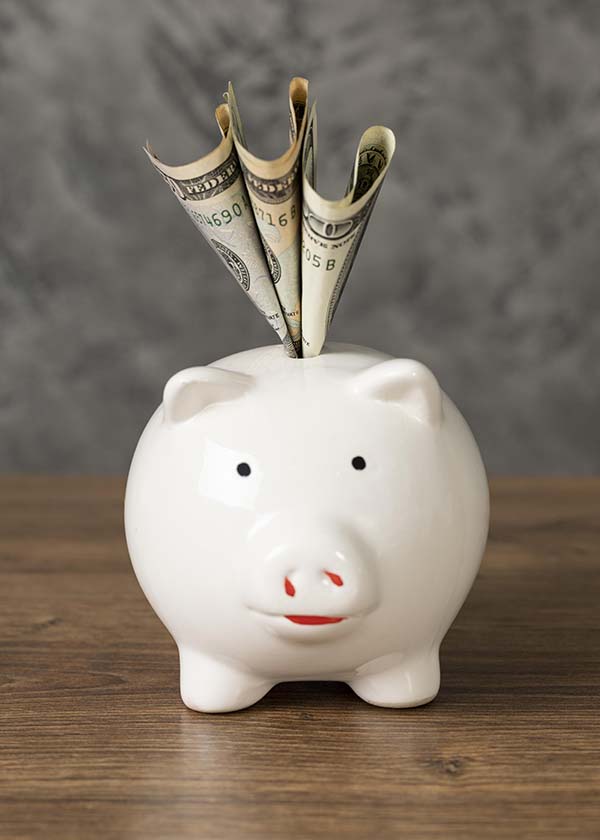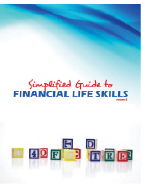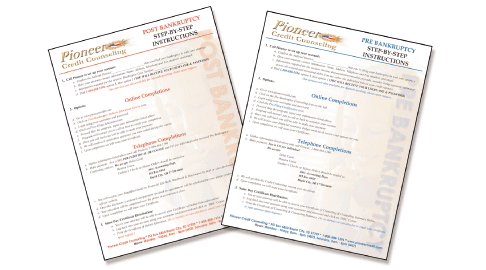In ordinary times, bank runs don’t happen. First, the FDIC insures all deposit accounts up to $100,000 [now $250,000] per account holder, precisely to prevent this kind of panic. However, in a real bank, many of the liabilities are not deposit accounts and hence are not insured. Second, banks can ordinarily borrow money “against” their assets; that is, a bank with $100 in good mortgages can borrow almost $100 from another bank – or, under certain conditions, from the Federal Reserve – by pledging those mortgages as collateral. If the bank’s assets are securities – mortgage-backed securities or CDOs, for example – they can also be used to raise short-term money.
These are no ordinary times, however. The fundamental problem is that all players in the financial system have realized that a bank that is solvent (assets > liabilities) can still be subject to a bank run. Once that happens, Bank A doesn’t want to lend money to Bank B for two reasons: first, Bank A wants to hold onto its cash in case it becomes the target of a bank run; and second, Bank A is afraid that Bank B could be the target of a bank run, and hence is afraid that if it lends to Bank B it won’t get its money back. Like all such panics, of course, this becomes self-fulfilling: because banks don’t want to lend, banks can’t get short-term credit, which makes them vulnerable.
This hits home when a bank has to “rollover” its short-term liabilities. Remember, banks borrow short and lend long. So periodically – almost continuously banks have to pay off and replace their short-term liabilities (or just agree with the lender to extend the loan another 30 or 90 days). And even though depositors are insured, all the other liabilities are not insured. The bank run happens when none of the short-term lenders want to extend their loans, and no one else is willing to offer a short-term loan.
In short, this is what has been going on during the last few weeks. The key characteristic of such a crisis is that banks can be hit by bank runs – and go bankrupt – even if their assets are worth more than their liabilities. The Fed has vastly expanded the amount of money it is willing to lend to banks and the range of collateral it is willing to take in an effort to provide the short-term funding banks need to fend off bank runs. In the longer term, though, the Fed is a relatively small player combined with the entire market for short-term credit, and the problem will not go away completely until that market is working properly again.
Credit Default Swap
A credit default swap (CDS) is a form of insurance on a bond or bond-like security. A bond is an instrument by which companies raise money. A company, say GE, issues a bond with a face value of $100 and a coupon of, say, 6%. This means that if you hold the bond, they will send you $6 per year (6% of $100) until the bond matures (say in 10 years); at that point, they will pay you $100 (the face value). To buy that bond, you pay them about $100. If you pay exactly $100, the yield is 6% ($6 divided by $100). If you pay less, the yield is more than 6%. How much the bond actually sells depends on how risky you think GE is (the chances that they will go bankrupt and won’t pay you) and on what interest rates you can get for other, similarly-risky bonds in the market. Bond-like securities, like CDOs, are similar in these basic respects.
When you buy a bond, you are taking on two types of risk: (a) interest rate risk and (b) default risk. Interest rate risk is the risk that interest rates in general will go up. If interest rates go up, the value of your bond goes down (bonds are traded in the secondary market), because you are still only getting $6 per year. Default risk is the risk that the bond issuer goes bankrupt and doesn’t pay you back. A CDS is called a “swap” because you are swapping the default risk – but not the interest rate risk – to another party, the insurer. The bondholder pays an insurance premium – typically quoted in basis points, or one-hundredth of a percentage point, per year – to the insurer. In exchange, the insurer promises to pay off the bond if the issuer goes bankrupt and fails to pay it off. At the time the CDS goes into effect, the expected value of the premium payments (a small amount every year) should exactly equal the expected value of the insurance payments (a large amount, but only if the issuer defaults).
This sounds pretty simple, right? So how did CDS become a dirty word? There are two main wrinkles to be aware of.
First, in order to buy a CDS (I call the bondholder in the above example the “buyer,” and the insurer the “seller”), you don’t actually have to own the bond in question. These are over-the-counter derivative contracts, which means they are individually negotiated between buyers and sellers. As a result, CDS became the tool of choice for betting on the likelihood of a company going bankrupt. If you thought the chances of company A going bankrupt were higher than everyone else thought they were, you would buy a CDS on company A. Three months later, when everyone else realized company A was in trouble, the market prices for CDS would have gone up, and you could either sell your CDS to someone else at a higher price, or you could sell a new CDS at a higher price. (In the latter case, you still have your original contract, and you [write] a new contract with a new buyer.) As a result, there are a lot of CDS out there; estimates are generally around $60 trillion, which means the total face value of the bonds insured is $60 trillion.
Second, CDSs are not regulated, and in fact, there was a measure inserted into an appropriations bill in December 2000 that blocked any agency from regulating them. Traditional insurance, by contrast, is highly regulated. Insurers have to maintain specific capital levels based on the amount of insurance they have sold; certain percentages of their assets have to be investments of specified quality levels; and, for personal insurance and workers’ compensation at least, private insurance companies are generally backed up by state guarantee funds, which charge a percentage of all insurance premiums and, in exchange, pay off claims for bankrupt insurers. The CDS market had none of that, so a bank could sell as many CDS as it wanted and invest the money in anything it wanted.
So, 2008 rolled around, and bonds started going bad. There were CDSs not just for traditional corporate debt, but also for mortgage-backed securities, CDOs, and secondary CDOs. During the boom, when everyone was optimistic, CDS for these exotic products were cheap; when they started failing, the price of CDS shot up, and anyone who had sold these swaps was looking at losses on them. So CDS were one way that losses on subprime mortgages triggered writedowns at other financial institutions. This only got worse as banks, such as Bear Stearns and Lehman, started failing, and people who had sold CDS on their debt faced even larger losses. So the most basic problem with CDS is that the insurers selling them (and many of the companies selling them were not insurance companies) sold them at excessively low prices, and now they are facing major losses.
Second, you have the risk that the insurance companies won’t be able to pay. If a financial institution – say, AIG – sold a lot of CDS based on the debt of a particular company – say, Lehman – there is a risk that it won’t be able to honor all of those swap contracts. In that case, their counterparties – other banks – may be looking at losses they thought they were insured against. If Bank B bought a CDS from Bank C on the debt of Company X, and Company X defaults, Bank B thinks it has a payment coming to it from Bank C; but if Bank C doesn’t have the cash, Bank B won’t get its payment. Even worse, let’s say Bank B bought a CDS from Bank C, and then sold a different one to Bank A. Bank B thinks it is perfectly hedged, and Bank A thinks it has a payment coming. But if Bank C can’t payout, Bank B may not be able to pay Bank A – and these chains can go on and on and on. So CDS are one of the things that create uncertainty in the banking sector; a bank may look healthy, but it may be counting on CDS payouts from other banks that you can’t see, so you can’t be sure it’s healthy, so you won’t lend to it.
The cumulative effect of CDS is to spread risk, which sounds good, but to spread risk in unpredictable and invisible ways. One of the major reasons why the government refused to let AIG fail – one day after letting Lehman fail – was that AIG was a large net seller of CDS, and if it had defaulted on those swaps no one could predict what the implications would be for the rest of the financial sector. At this point in the financial crisis, it would be a mistake to blame the whole thing on CDS, but they have had the effect of amplifying and spreading uncertainty in ways that have reduced confidence in the financial sector.
Stock Market vs. Credit Market
Fears of a global economic slowdown are reflected in the stock market. Stocks are claims on the future cash flow of companies, and companies do better during economic growth periods than during recessions. When sentiment shifts from the belief that we will see a short, mild recession to the belief that we will see a long, harsh recession, the stock market goes down. By contrast, the acute credit crunch is reflected in the credit market in the record-high prices that banks are charging to lend to each other and to ordinary companies.
Although you and I and most people with investments have more money in the stock market than in the credit market, the stock market is more a gauge of sentiment than an independent force in the economy. Lower stock prices make it more expensive for companies to raise equity capital, but most companies raise more money by issuing debt than by issuing stock. And when people’s investments go down, they tend to spend less, but only a little; if their 401(k) goes down by $10,000, they don’t cut back on spending by $10,000. The credit markets, by contrast, have direct and immediate effects on how companies behave; in an extreme case, no credit can mean no cash with which to make payroll.
Now the credit and stock markets are related because when the credit market freezes up, people’s expectations about the future turn downward, and hence stock prices fall. Ironically, all the attention the credit crisis has gotten over the last three weeks has undoubtedly hurt stock prices because of all the talk about potentially dire consequences. So in this context, what does the fall in the stock market mean? Probably two things. First, people are only beginning to realize that Europe is in big trouble – given its difficulty in coming up with coordinated economic policy, perhaps bigger trouble than the U.S. Because U.S. companies operate in a global economy, that will hurt all companies. Second, it means that more people are realizing that the Paulson plan is only a partial solution, which is something we (along with many other people) have been saying for a while.
As long as the credit market remains tight, fears of recession will remain high, and stock prices will suffer. The important question is when the credit market will loosen up. Right now it looks like there are still enough open issues with the Paulson plan (what price, which securities, how fast) that lenders are still waiting and seeing. In the long term, though, the stock market will only turn up when people believe there is a credible plan for fighting the recession in the real economy.




